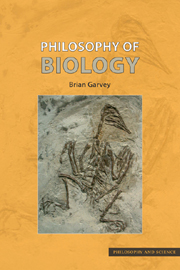Book contents
- Frontmatter
- Contents
- Acknowledgements
- Introduction
- 1 The argument in Darwin's Origin
- 2 The power of genes
- 3 Units of selection
- 4 Panglossianism and its discontents
- 5 The role of development
- 6 Nature and nurture
- 7 Function: “what it is for” versus “what it does”
- 8 Biological categories
- 9 Species and their special problems
- 10 Biology and philosophy of science
- 11 Evolution and epistemology
- 12 Evolution and religion
- 13 Evolution and human nature
- 14 Biology and ethics
- Notes
- Further reading
- Bibliography
- Index
4 - Panglossianism and its discontents
- Frontmatter
- Contents
- Acknowledgements
- Introduction
- 1 The argument in Darwin's Origin
- 2 The power of genes
- 3 Units of selection
- 4 Panglossianism and its discontents
- 5 The role of development
- 6 Nature and nurture
- 7 Function: “what it is for” versus “what it does”
- 8 Biological categories
- 9 Species and their special problems
- 10 Biology and philosophy of science
- 11 Evolution and epistemology
- 12 Evolution and religion
- 13 Evolution and human nature
- 14 Biology and ethics
- Notes
- Further reading
- Bibliography
- Index
Summary
The Hamilton-Williams view of evolution, which I outlined in Chapter 3, sees genes as having a unique role to play in evolutionary explanation. They are taken to govern the construction of organisms, and organisms and their behaviours are taken to be designed in their interests. Views that take other things to be units of selection – for example, memes or groups – claim that at least some features of organisms are designed to serve the interests of things other than genes. However, those latter theories are still focusing on adaptation, that is, they are still giving answers to the question: what is x designed for? Where they differ is on the claim that, in so far as a trait can be said to be designed at all, it can be said to be designed for the benefit of genes.
It is compatible with either the gene-selectionist view or its rivals that very many traits are not adaptations at all. If there are traits that are not adaptations then they cannot be explained as being for the benefit of selfish genes, selfish memes, groups, or anything else. They require a different kind of explanation. But we are used to hearing evolutionary theorists offering explanations of traits in terms of how those traits promote the replication of genes and, in a minority of cases, in terms of how they promote the propagation of memes or the continuation of the group.
- Type
- Chapter
- Information
- Philosophy of Biology , pp. 46 - 63Publisher: Acumen PublishingPrint publication year: 2007

